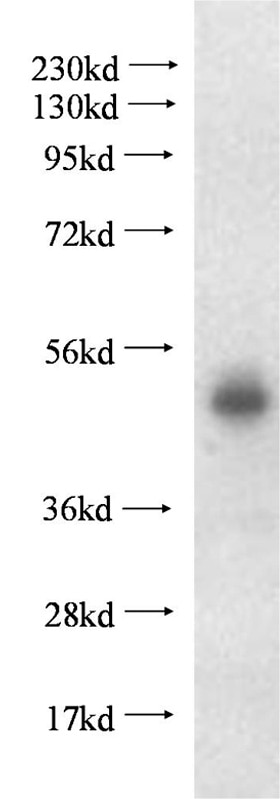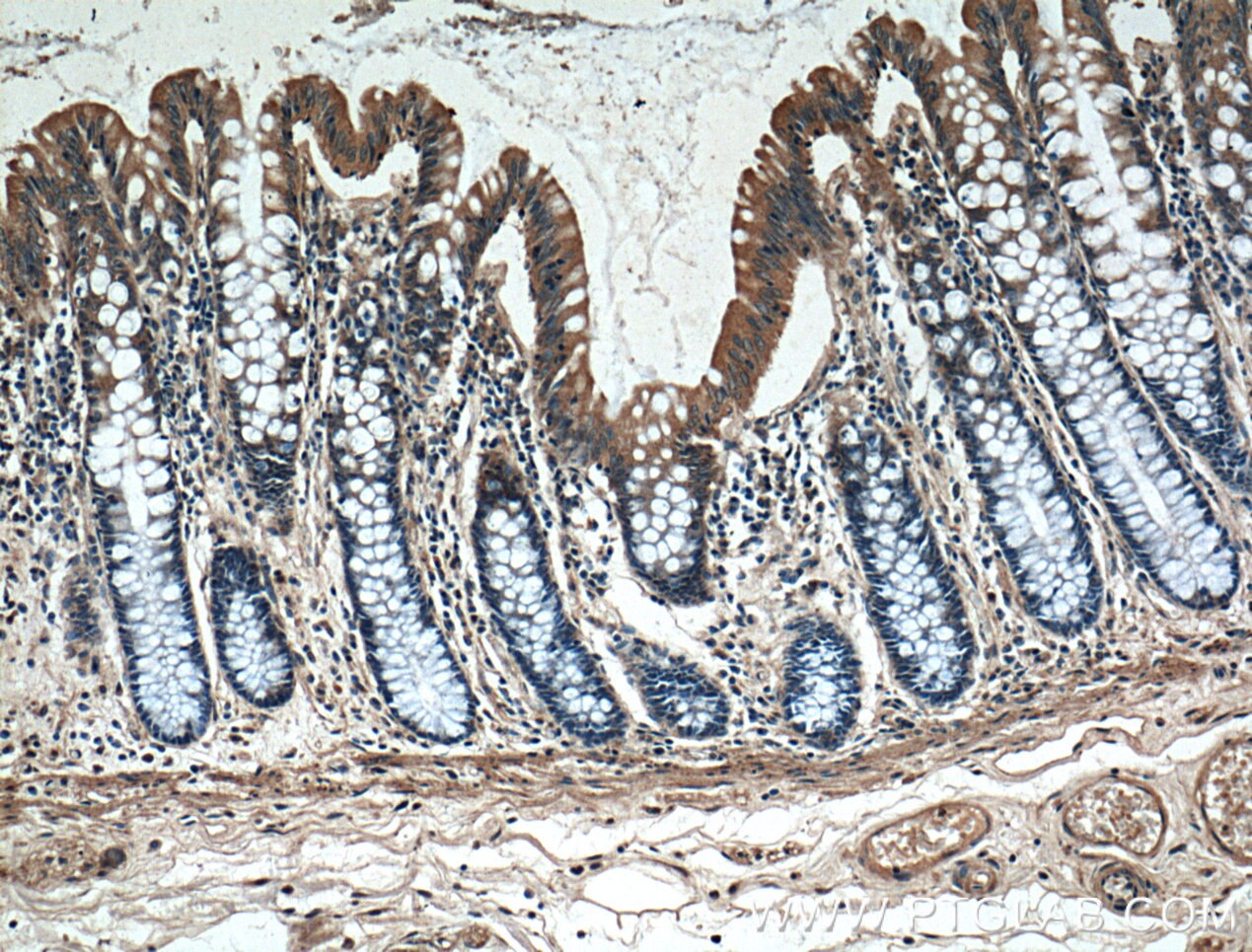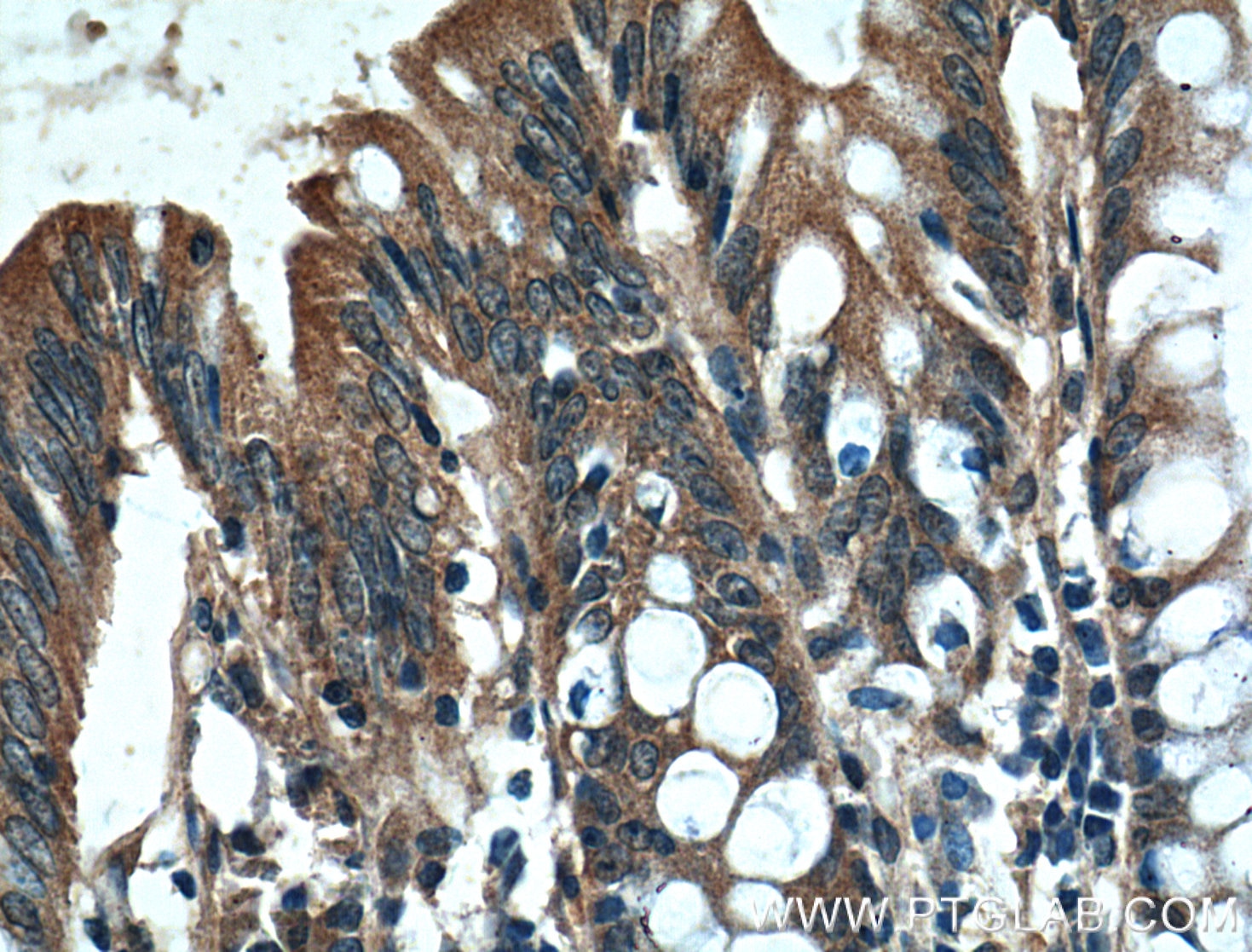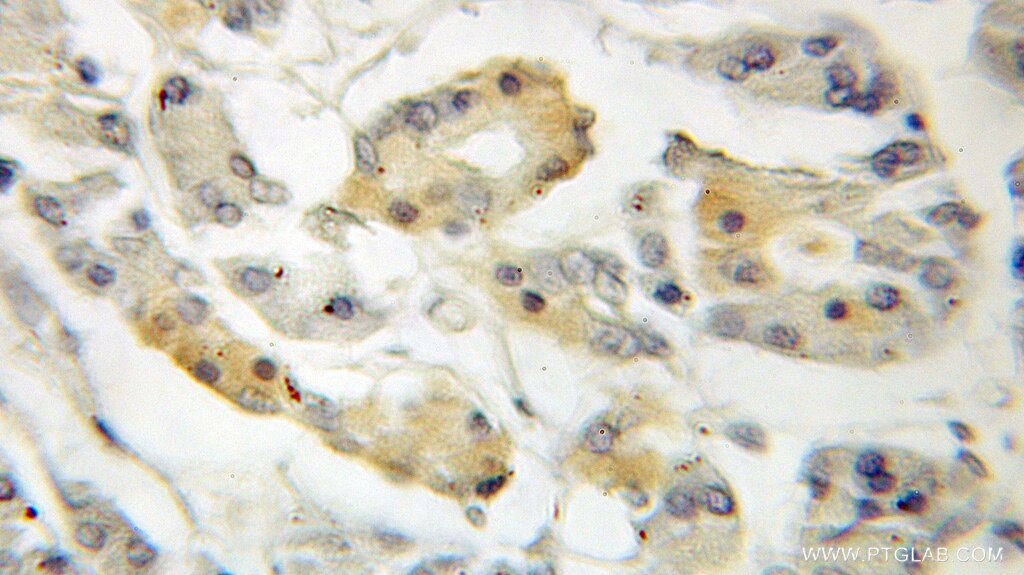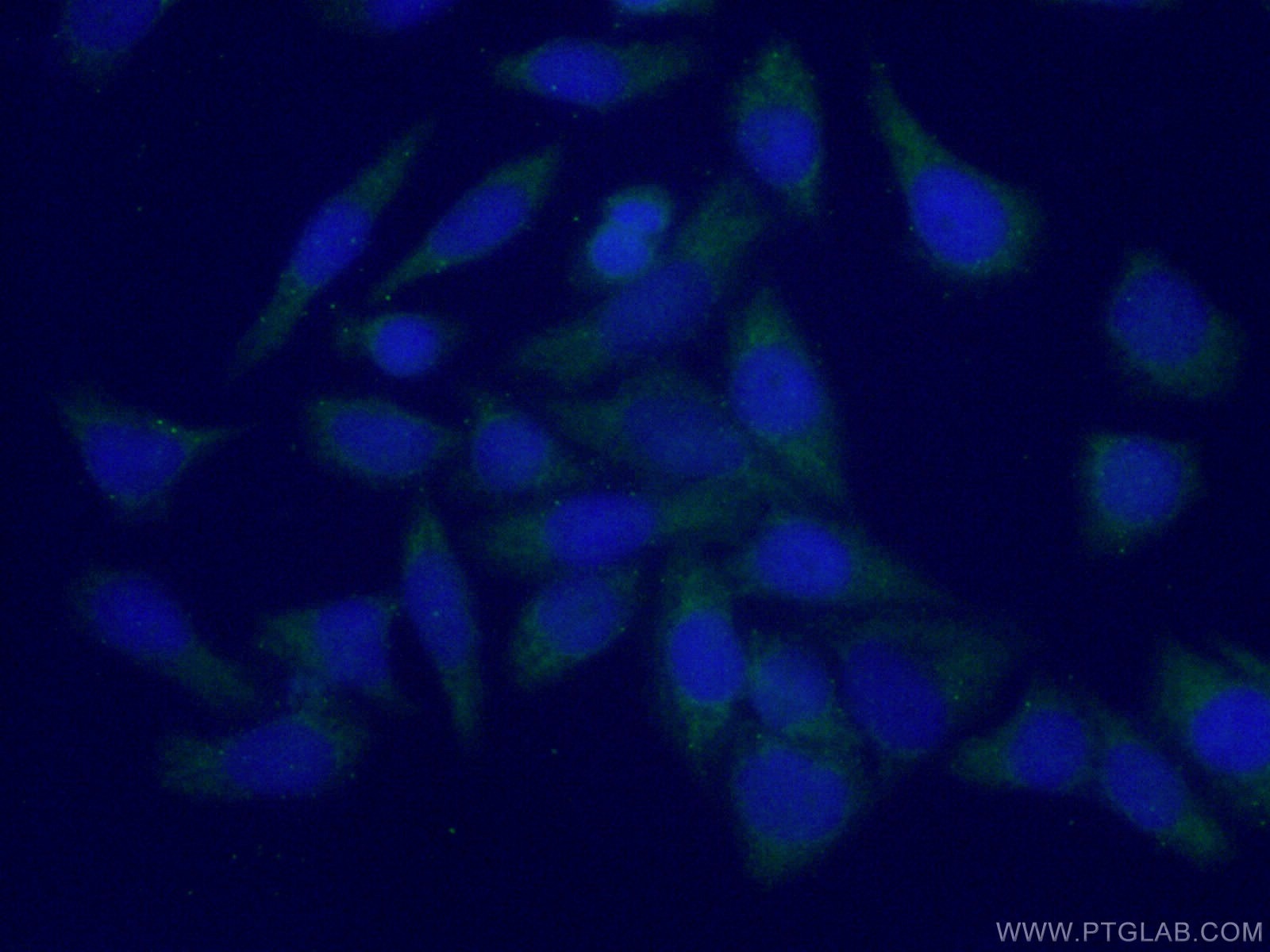PLEKHA1 Polyklonaler Antikörper
PLEKHA1 Polyklonal Antikörper für WB, IHC, IF/ICC, ELISA
Wirt / Isotyp
Kaninchen / IgG
Getestete Reaktivität
human und mehr (1)
Anwendung
WB, IHC, IF/ICC, IP, ELISA
Konjugation
Unkonjugiert
Kat-Nr. : 10238-1-AP
Synonyme
Geprüfte Anwendungen
| Erfolgreiche Detektion in WB | humanes Plazenta-Gewebe, Jurkat-Zellen |
| Erfolgreiche Detektion in IHC | humanes Kolongewebe, humanes Pankreaskarzinomgewebe Hinweis: Antigendemaskierung mit TE-Puffer pH 9,0 empfohlen. (*) Wahlweise kann die Antigendemaskierung auch mit Citratpuffer pH 6,0 erfolgen. |
| Erfolgreiche Detektion in IF/ICC | HeLa-Zellen |
Empfohlene Verdünnung
| Anwendung | Verdünnung |
|---|---|
| Western Blot (WB) | WB : 1:500-1:1000 |
| Immunhistochemie (IHC) | IHC : 1:50-1:500 |
| Immunfluoreszenz (IF)/ICC | IF/ICC : 1:50-1:500 |
| It is recommended that this reagent should be titrated in each testing system to obtain optimal results. | |
| Sample-dependent, check data in validation data gallery | |
Veröffentlichte Anwendungen
| WB | See 3 publications below |
| IP | See 1 publications below |
Produktinformation
10238-1-AP bindet in WB, IHC, IF/ICC, IP, ELISA PLEKHA1 und zeigt Reaktivität mit human
| Getestete Reaktivität | human |
| In Publikationen genannte Reaktivität | human, Maus |
| Wirt / Isotyp | Kaninchen / IgG |
| Klonalität | Polyklonal |
| Typ | Antikörper |
| Immunogen | PLEKHA1 fusion protein Ag0318 |
| Vollständiger Name | pleckstrin homology domain containing, family A (phosphoinositide binding specific) member 1 |
| Berechnetes Molekulargewicht | 46 kDa |
| Beobachtetes Molekulargewicht | 46 kDa |
| GenBank-Zugangsnummer | BC001136 |
| Gene symbol | PLEKHA1 |
| Gene ID (NCBI) | 59338 |
| Konjugation | Unkonjugiert |
| Form | Liquid |
| Reinigungsmethode | Antigen-Affinitätsreinigung |
| Lagerungspuffer | PBS with 0.02% sodium azide and 50% glycerol |
| Lagerungsbedingungen | Bei -20°C lagern. Nach dem Versand ein Jahr lang stabil Aliquotieren ist bei -20oC Lagerung nicht notwendig. 20ul Größen enthalten 0,1% BSA. |
Hintergrundinformationen
Pleckstrin homology (PH) domain is commonly found in eukaryotic signaling proteins and possesses multiple functions including the abilities to bind inositol phosphates and various proteins. The tandem PH domain containing protein-1 (TAPP1) or PH domain containing-family A (phosphoinositide binding specific) member 1 (PLEKHA1), interacts strongly and specifically with phosphatidylinositol 3,4-trisphosphate [PtdIns(3,4)P(2)], which is one of the immediate breakdown products of PtdIns(3,4,5) P (3) and functions as a signalling molecule in insulin- and growth-factor-stimulated pathways. TAPP1 is also associated with the protein- tyrosine-phosphatase-like protein-1 (PTPL1 also known as FAP-1) and maintains PTPL1 in cytoplasm. By binding to PtdIns(3,4) P (2) and PTPL1, TAPP1 may regulate the membrane localization of PTPL1."
Protokolle
| PRODUKTSPEZIFISCHE PROTOKOLLE | |
|---|---|
| WB protocol for PLEKHA1 antibody 10238-1-AP | Protokoll herunterladen |
| IHC protocol for PLEKHA1 antibody 10238-1-AP | Protokoll herunterladenl |
| IF protocol for PLEKHA1 antibody 10238-1-AP | Protokoll herunterladen |
| STANDARD-PROTOKOLLE | |
|---|---|
| Klicken Sie hier, um unsere Standardprotokolle anzuzeigen |
Publikationen
| Species | Application | Title |
|---|---|---|
Nucleic Acids Res An H3K4me3 reader, BAP18 as an adaptor of COMPASS-like core subunits co-activates ERα action and associates with the sensitivity of antiestrogen in breast cancer. | ||
J Exp Med Secretogranin III as a disease-associated ligand for antiangiogenic therapy of diabetic retinopathy. | ||
Exp Eye Res Function-first ligandomics for ocular vascular research and drug target discovery. | ||
J Proteome Res EIF4G2 Promotes Hepatocellular Carcinoma Progression via IRES-dependent PLEKHA1 Translation Regulation | ||
Cell Death Differ BAP18 facilitates CTCF-mediated chromatin accessible to regulate enhancer activity in breast cancer | ||
Nat Genet Multi-omic quantitative trait loci link tandem repeat size variation to gene regulation in human brain |
